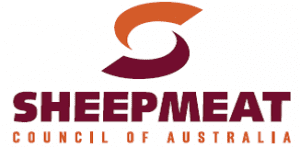 AUSTRALIA’S peak federal and state meat industry body leaders are expected to decide today whether to release all or part of the long-awaited Sheepcatcher II report.
AUSTRALIA’S peak federal and state meat industry body leaders are expected to decide today whether to release all or part of the long-awaited Sheepcatcher II report.
Although parts of the report were reportedly released to the Weekly Times this week, indicating industry issues with meeting national traceability performance standards, the Sheepmeat Council of Australia yesterday said it is committed to the continuous improvement of the current mob-based National Livestock Identification System for sheep and goats.
SCA chief executive officer Kat Giles said she did not want to speculate on what the SAFEMEAT Partners would do with the Sheepcatcher II report or its recommendations.
“There will be a discussion on it tomorrow, whether the final decision is made or not I’m not able to determine, but there will be a discussion about the release of the report.”
The SCA’s statement yesterday said the industry-government SAFEMEAT partnership is considering the Sheepcatcher II report and its 18 recommendations, as prepared by Animal Health Australia, at a meeting today.
“SAFEMEAT is consulting with stakeholders regarding appropriate actions that industry and government will take against each of the recommendations.
“SCA will provide further advice to producers once the SAFEMEAT Partners finalise their response to the report and the next steps to further improving the national traceability system for sheep and goats,” the sheepmeat council statement said.
In December last year SCA and WoolProducers Australia said in a statement they were heartened by news that the unreleased Sheepcatcher II report indicated some improvement in the current NLIS system since 2007 and that it could meet national traceability performance standards. SAFEMEAT Partners chairman Ross Keane then told Sheep Central the Sheepcatcher II report indicated the existing NLIS system covering sheep and goats is able to meet the requirements of the traceability performance standards.
“The findings have indicated there is some improvement since a similar exercise was conducted in 2007,” he said.
The national sheep industry bodies don’t believe Victoria’s decision to mandate electronic sheep and goat identification in the state has jeopardised the national industry’s opportunities to improve the current national visual tag mob-based system.
The Sheepcatcher II exercise last year was conducted by AHA to assess the system against the National Livestock Traceability Performance Standards (NLTPS). It involved the tracking of 60 sheep and goats selected from various points in the national production system, including saleyards and abattoirs. After the exercise, in which Victorian authorities failed in 14 days to track the movements of 14 sheep to the same level of confidence of more than 300 cattle traced within 24 hours, the state’s chief veterinary officer Charles Milne rated Australia’s traceability systems for sheep as “very poor.” Sheepcatcher II followed a previous evaluation conducted in 2007. The Sheepcatcher I report was never publicly released.
Information gathered in the Sheepcatcher exercise was to be used to guide future improvements of the NLIS for sheep and goats, but as the most up-to-date assessment of the NLIS traceability system for sheep and goats, it is expected to indicate whether all states are meeting national NLIS traceability performance standards.



HAVE YOUR SAY